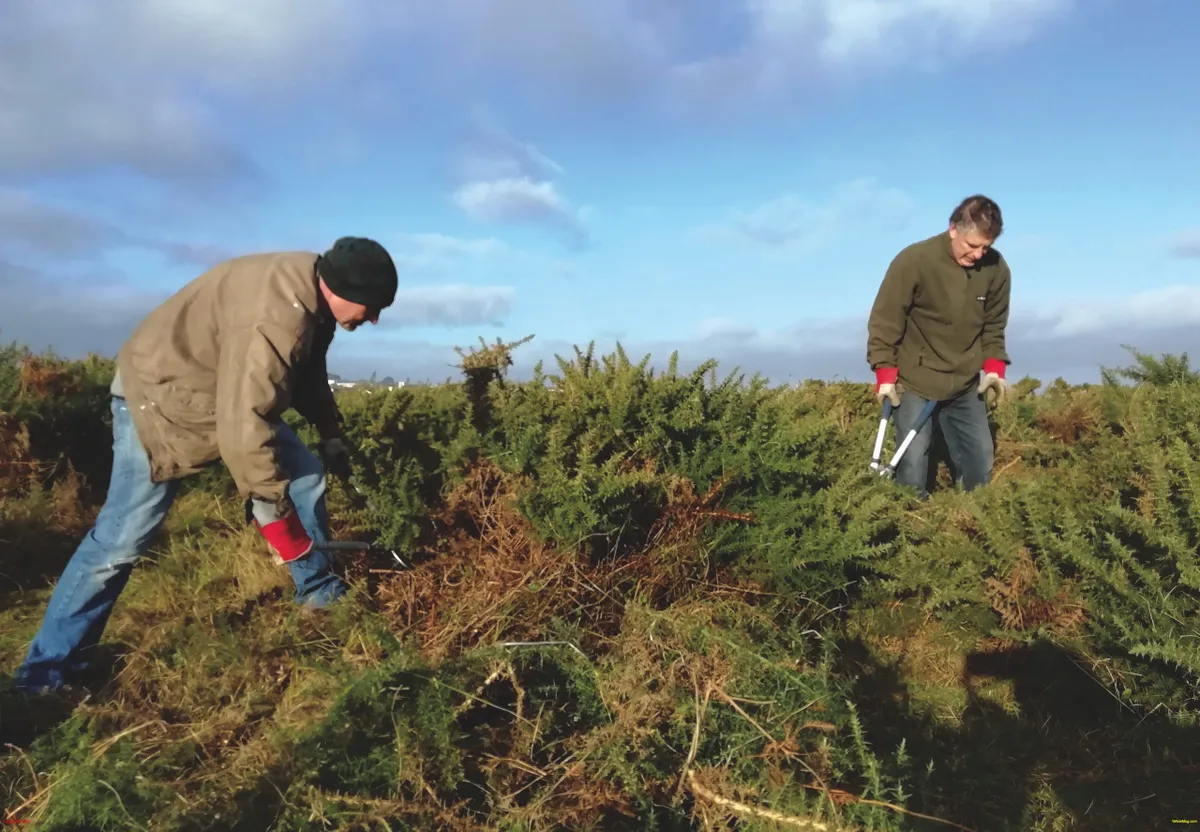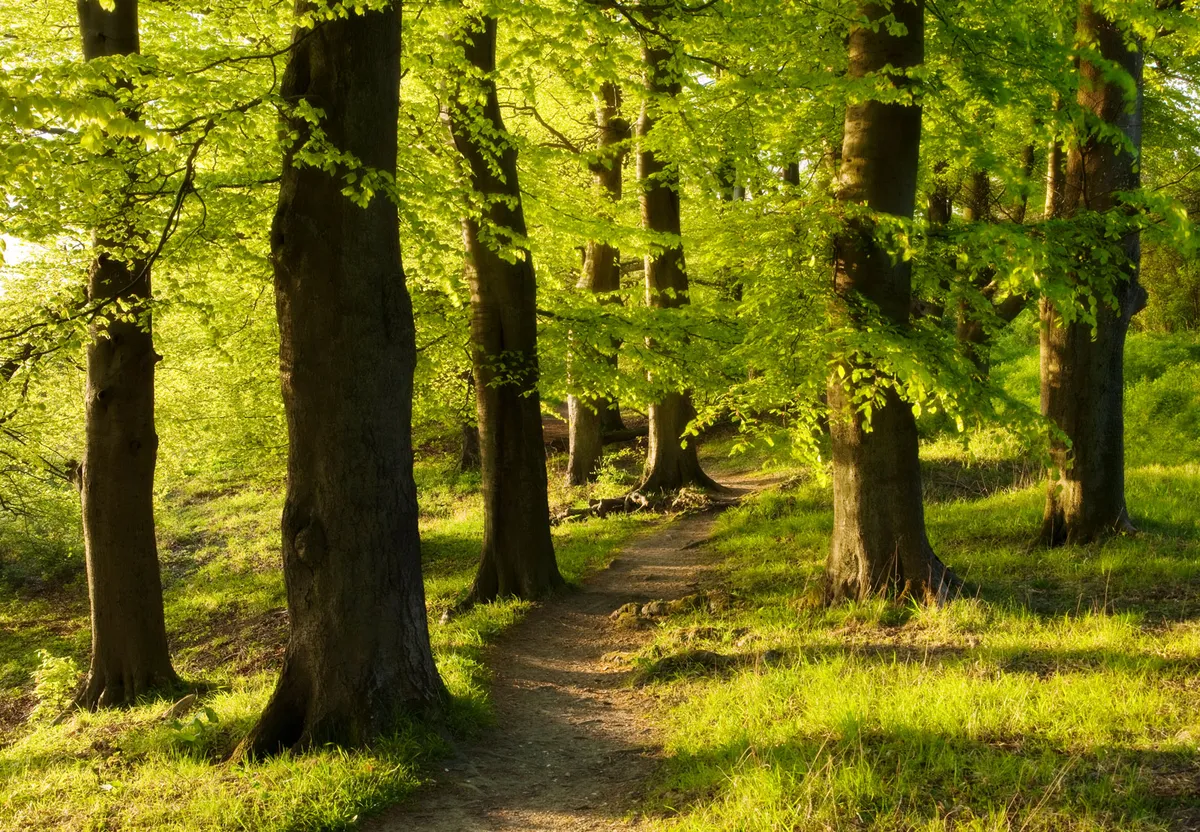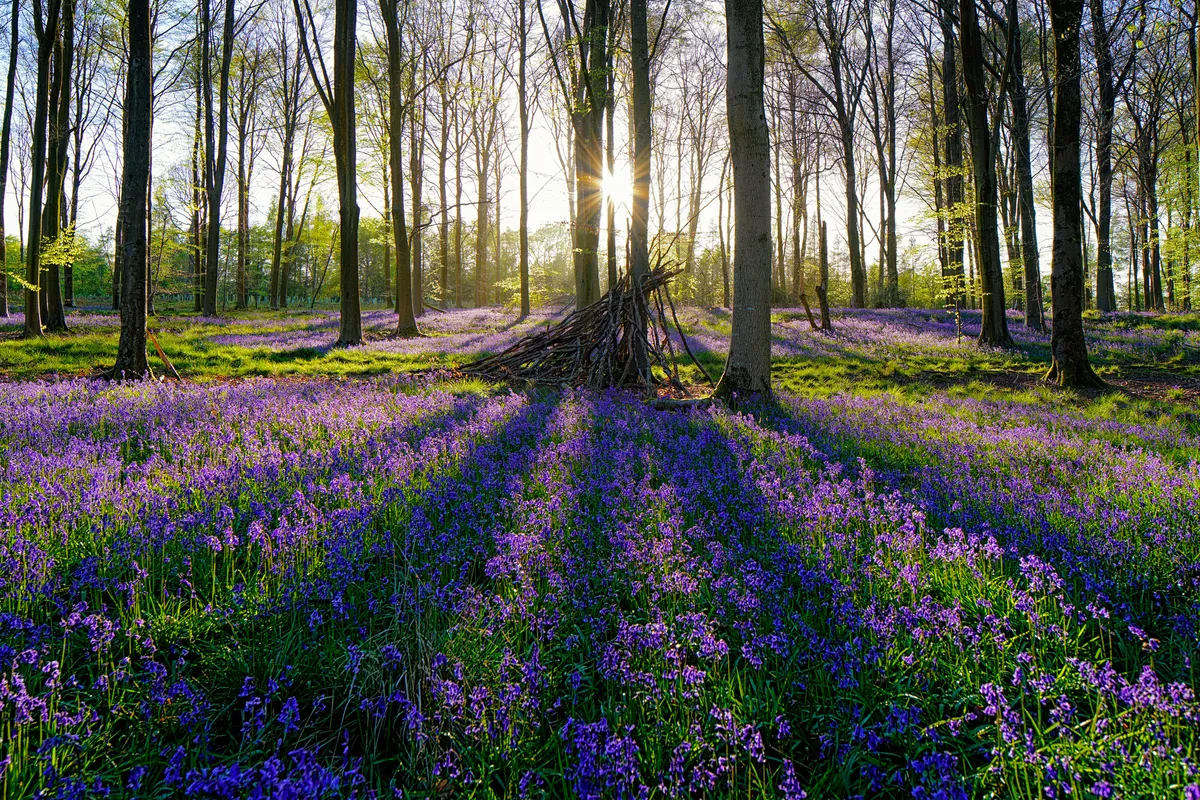Volunteering in the countryside is a great way to stay fit, make friends and help the environment.
Ali Wood spends a day on Hengistbury Head in Dorset with the ranger team to find out more.

I angle the loppers near the stem of the thick gorse bush and listen to the roar of the tumbling waves. As I chop, I imagine Hengistbury Head as it was 2,000 years ago: a thriving Iron Age port – one of the most important in Britain – which was later to become a desolate wasteland and a smugglers’ haunt.
Back then, the sea would have been further out, but in the 19th century, the spit – which separates Bournemouth from Christchurch – became an open-cast mine and picks were used to claw out ironstone doggers (stones rich in valuable iron ore), causing half of the headland to erode.

Why do we need to conserve Hengistbury Head ?
This sand-fringed sentry that guards Christchurch Harbour needs protecting, and all around me are its defenders. Wellied and gloved, wielding shears and flasks, they turn up every Thursday to lop, clear, dig and plant. Today, we’re scrub clearing to protect the wildlife, as this is one of just 60 sites in Britain where natterjack toads thrive.
“Pretty much anything will predate on the toadlets,” says ranger Phil Wetherell. “They even cannibalise themselves, which is why they have to lay thousands of eggs. By clearing the scrub around the pond, we make it a bit easier for them to get to their burrows.”
The toads spend the winter months in hibernation, but in spring they emerge from a deep sleep and hop along the highway that has been cleared by the volunteers.
Hengistbury Head is also home to more than 500 plant species, 300 types of birds and a variety of reptiles and small mammals – yet more cause for conservation.

Why volunteer?
There are around 30 people scrub clearing in the sandy heathland today. There’s a biting wind sweeping in from the east, but coats are coming off. It’s thirsty work.
Bent double, I tug at the gnarled, thorny gorse limbs and toss them into a communal pile, working companionably alongside former dentist Nicola McIntyre. Nearby is a lone patch of flowering gorse that nobody wants to touch.
“I could be pulling someone’s teeth right now, but I developed Meniere’s disease,” says Nicola. “If I’m not too dizzy, I want to be out doing something therapeutic. The way I see it, I benefit and they benefit; I want this amazing resource to be here for the future.”
I have to agree. Looking across to the beach where I swim, the harbour where I sail, and between them the SSSI headland where sand martins nest, I can’t think of a better way to spend a morning.
What other volunteering opportunities are there?
Woodland Trust

Since 1972, Woodland Trust staff and volunteers have planted over 43 million trees. The conservation charity owns more than 1,000 woods across the UK; look out for volunteering opportunities near you. woodlandtrust.org.uk
National Trust

Celebrating its 125th anniversary this year, the National Trust’s aim is to care for nature, history and beauty. From drystone walling to beach cleans and scrub clearing, there are plenty of ways to get involved. nationaltrust.org.uk
RSPB

With 12,000 volunteers contributing almost one million hours a year, the RSPB is the country’s largest nature conservation charity. Become a wildlife guide, a visitor centre assistant or a gardener and share your passion for wildlife. rspb.org.uk
Forestry England

Forestry England manages the nation’s forests. You can get stuck into practical conservation, maintaining trails and vegetation management, or lead events, greet visitors and help out with wildlife surveys. forestryengland.uk

